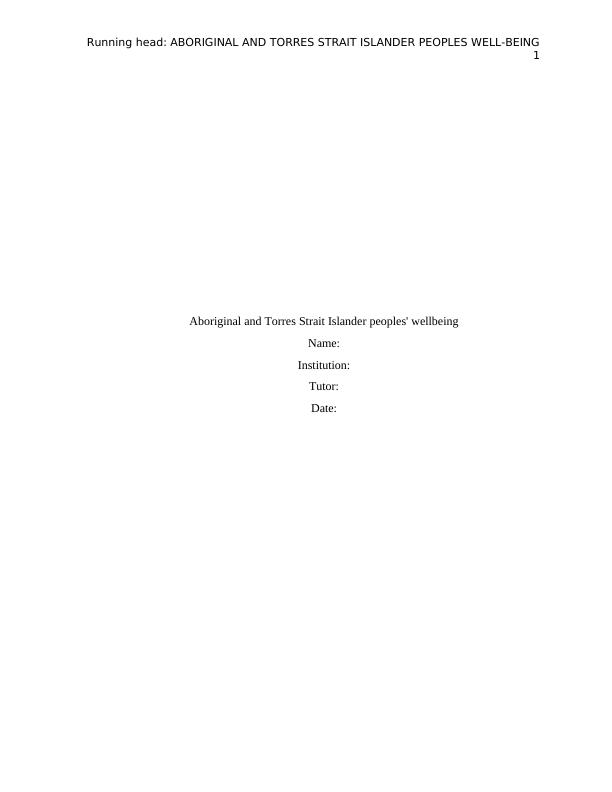Aboriginal and Torres Strait Islander Peoples Well-Being: Analysis of Close the Gap Campaign and AHRC Report
Added on 2022-11-13
9 Pages2130 Words267 Views
End of preview
Want to access all the pages? Upload your documents or become a member.
Aboriginal and Torres Strait Islander Peoples Well-Being: Analysis of Healthcare Inequalities and Initiatives
|10
|2500
|221
Aboriginal and Torres Strait Islander Peoples’ Well-Being
|8
|2229
|86
Closing the Gap: Addressing Health Inequalities among Aboriginals and Torres Strait Islanders
|9
|2389
|68
Aboriginal and Torres Strait Islanders People Well-Being
|9
|2209
|291
Closing the Gap: A Campaign for Health Equality
|9
|2256
|34
Indigenous Population Health Care in Australia
|7
|2127
|87



